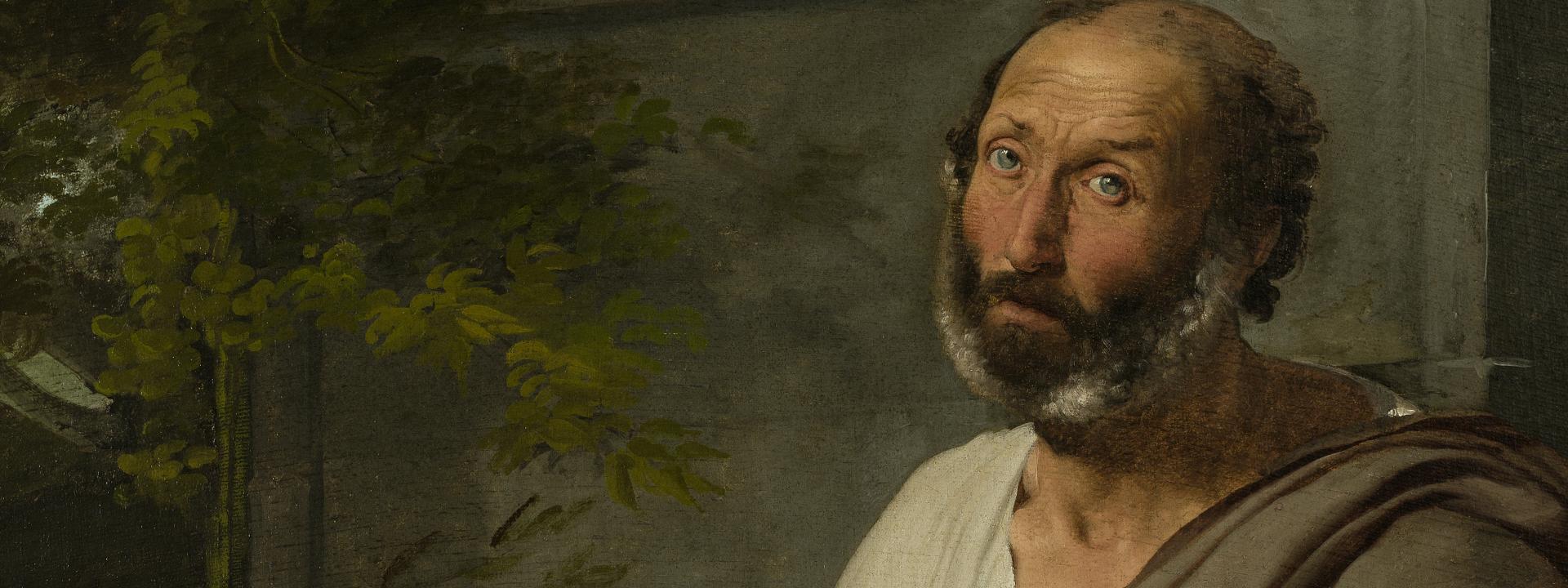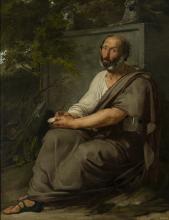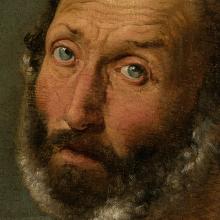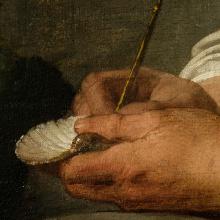Undertaken during the early years of his residency in Rome, probably around 1811, the painting became part of the Leopoldo Cicognara collection either through purchase or donated by the young painter to the president of the Accademia di Belle Arti in Venice, who had expedited and strongly backed the granting of a scholarship to Hayez so that he could sojourn and study in Rome.
Aristides, an Athenian politician who lived towards the end of the sixth and early fifth century BCE, is depicted as he is writing his own name on an oyster shell, an unequivocal allusion to the ostrakon, a term that literally signifies “shell” but was used to refer to the pottery shards used by Athenians as a “ballot” to vote for a person’s banishment or ostracism. The episode is taken from Parallel Lives, where Plutarch tells the story of how Aristides the Just helped a citizen who could neither read nor write to cast his vote for his own ostracism from the city. Hayez chooses the most stoic and morally elevated moment of the great Athenian’s civil commitment and he is depicted with solemn composure.



